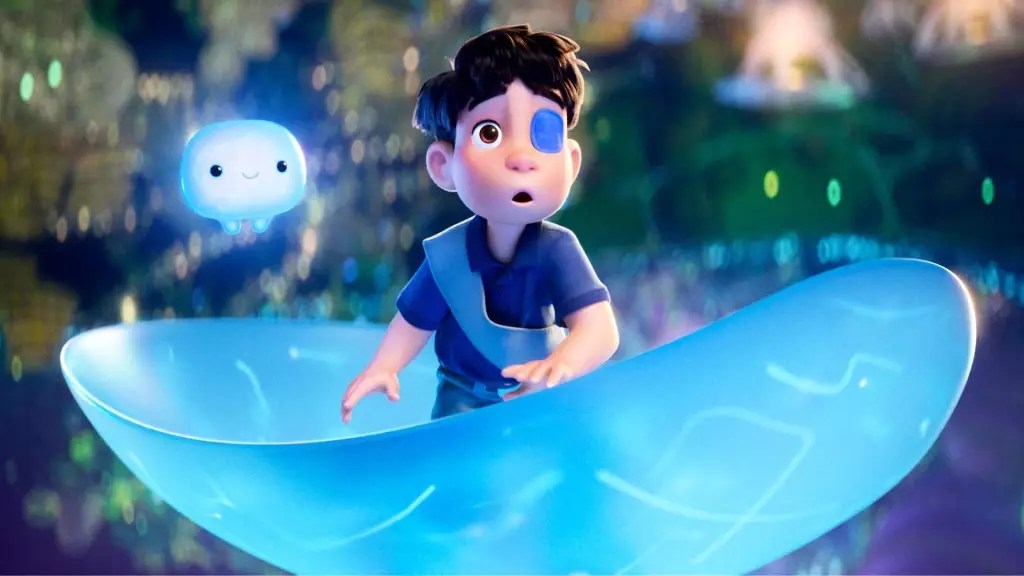The recent release of Pixar’s latest venture, *Elio*, has turned from a highly anticipated launch into a glaring example of the studio’s misalignment with audience expectations. With a dismal opening weekend revenue of just $21 million, it marked the worst box office performance in Pixar’s storied history, representing more than just a financial setback; it underscores a seismic shift in the animation landscape. Despite boasting a respectable Rotten Tomatoes score of 84%, the film has been met with a chilly reception, highlighting a disconnect between critical acclaim and audience enthusiasm. This dissonance raises unsettling questions about creativity’s role amidst changing consumer habits, suggesting a deeper malaise that may afflict original animated storytelling.
A Widening Gap: Original vs. Sequels
Film analysts like Doug Creutz have highlighted an alarming trend: the widening chasm between original animated features and sequels or franchise films. The COVID-19 pandemic seems to have altered viewing patterns and audience expectations, leading to a troubling preference for familiar franchises over innovative storytelling. Creutz echoed this sentiment with his forecast that studios may respond to *Elio*’s performance by radically curtailing their investment in original intellectual properties (IPs). Such a retreat could stifle the lifeblood of creativity, limiting opportunities for new stories and characters, and ultimately threatening the sustainability of the animated film genre itself.
For Pixar, a company synonymous with pioneering storytelling and emotional resonance, this is less about one movie’s failure and more about a potential neglect of the very principles that made it a household name. As audiences gravitate increasingly toward sequels that promise familiar characters and nostalgic journeys, original content may well become the casualty of shifting cinematic priorities.
The Stakes for Disney and Its Portfolio
The ripple effects extend far beyond Pixar’s studios. Disney, relying on its animated films as a linchpin for its broader consumer ecosystem, faces a strategic dilemma. With a staggering $34 billion in revenue generated from its theme parks, the company’s dependency on fresh, compelling content to drive park attractions cannot be overstated. The lack of new hit properties following diminishing returns from original films could hinder Disneyland and Walt Disney World from innovating their offerings, ultimately impacting the entire Disney brand.
This conundrum is compounded by the company’s simultaneous pressure to produce sequels. While films like *Inside Out 2* and *Toy Story 5* create a rush of revenue, they do little to expand Disney’s intellectual property repertoire, vital for long-term growth. A lack of new characters and narratives might inhibit the company’s ability to refresh its brand and keep pace with competitors who are finding ways to innovate.
Impact on Investor Confidence
The ramifications of *Elio*’s performance clearly extend into the financial domain as well. Investors reacted swiftly to the disheartening box office news, initially dropping Disney shares by 2%. While they rallied slightly later in the trading day, such volatility showcases a market increasingly wary of Disney’s future prospects in the face of original content disappointing. The outcry to bolster original stories has never been louder, underscoring the fundamental challenge for Disney: how to reignite the magic that once enchanted international audiences.
For savvy investors, understanding the nuances of audience reception is critical. The performance of individual films is often shrugged off in a broader financial sense, but the implications tied to the company’s park and merchandise pipelines are far-reaching, potentially influencing long-term investment strategies.
The Road Ahead: Towards Innovation or Regression?
As discussions swirl around *Elio* and its implications for Pixar and Disney, the pressing question remains: What does the future hold? The stark contrast in box office performance between original films and sequels raises vital considerations about creativity and sustainability in the animation industry. If studios continue to prioritize immediate box office returns over the risk of developing new IPs, the ramifications for artistic innovation will be profound.
Ultimately, reversing this trend may require a paradigm shift in both production and marketing strategies, embracing risk to foster creativity rather than retreating to familiar ground. Consumers craving fresh, original content may ultimately drive studios to heed the evolving landscapes of preference, provided that the filmmakers choose to listen. Whether this results in a renaissance of animated storytelling remains to be seen, but the stakes have never been higher for an industry in need of renewal.

